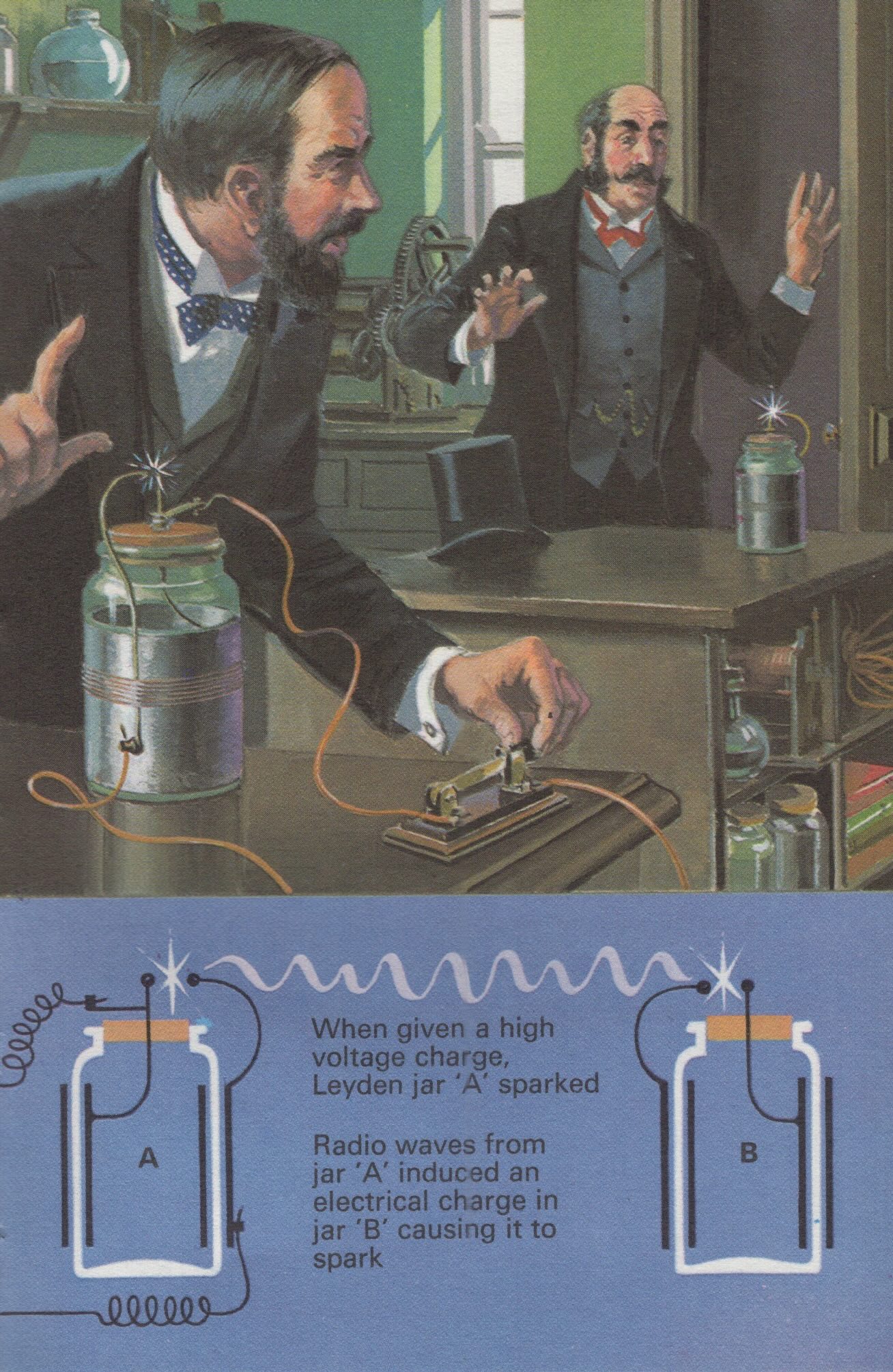 Heinrich Hertz proves that radio waves could be created
Heinrich Hertz proves that radio waves could be created
Eight more year passed before a German, Heinrich Hertz, made an experiment which proved Maxwell had been right.
Hertz used simple apparatus - just two Leyden jars. A Leyden jar is a type of 'condenser' (something which can store up an electrical charge), and is made by coating with metal foil the outside and inside of a glass jar.
Hertz put a Leyden jar on one side of the room and a second jar on the opposite side of the room. Each jar had a small spark-gap connected across its metal coatings.
Now came one of the greatest moments in the history of radio. When Hertz electrically charged one jar, a spark jumped across its spark-gap. Almost instantly a spark crackled across the spark-gap of the other jar. Radio waves had been created by the discharge of the first Leyden jar, crossed the room at 186,000 miles a second and had induced, that is forced, into the other jar an electrical charge that made it spark.
This proved that radio waves existed and could be transmitted without wires across space. These waves became known as 'Hertzian waves' after the German Hertz.
Professor Maxwell's calculations had been proved to be absolutely correct.
Material taken from: A Ladybird 'Achievements' Book, Publishers: Wills & Hepworth Ltd, Loughborough, First published 1968. Printed in England.